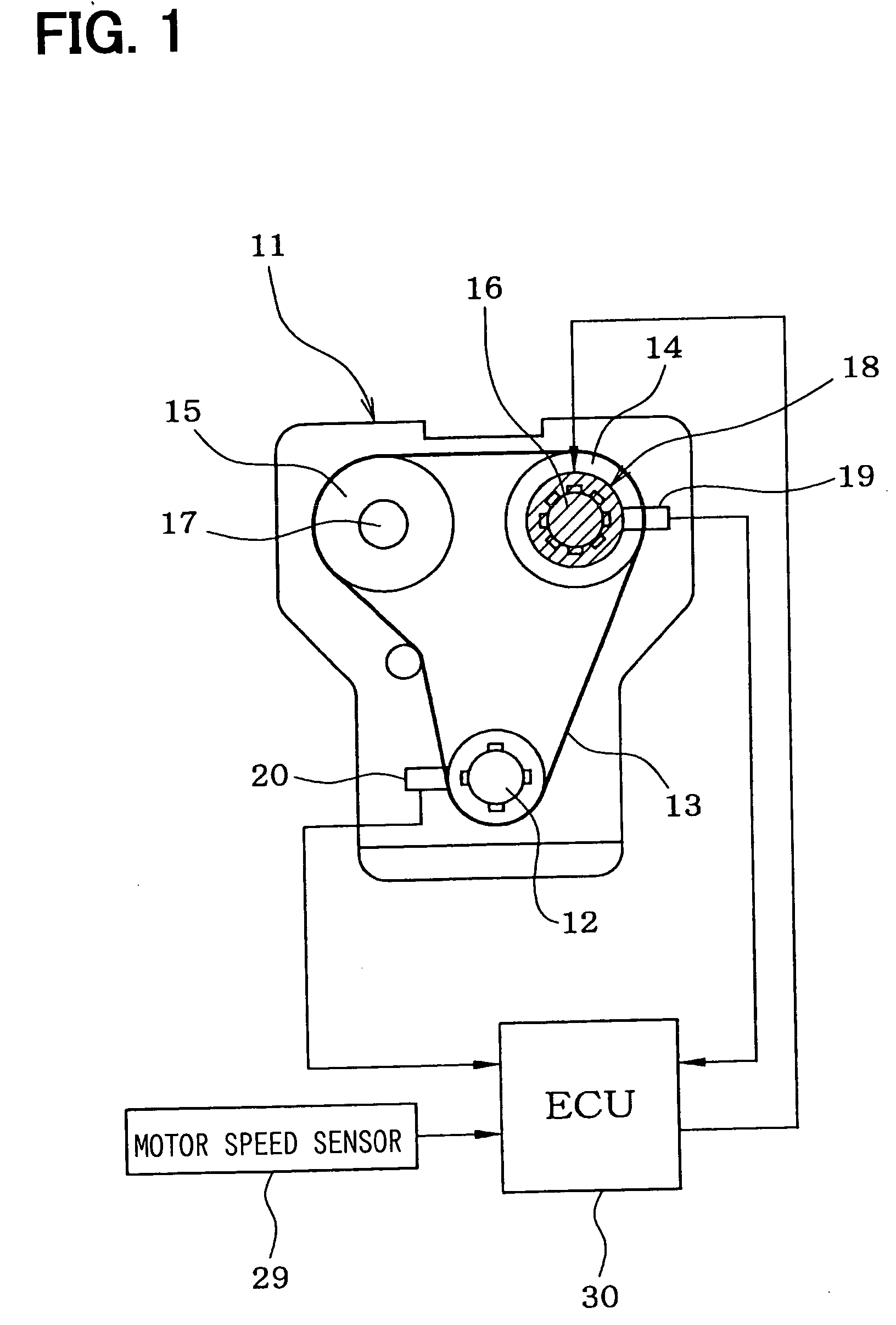Variable valve timing control device of internal combustion engine
- Summary
- Abstract
- Description
- Claims
- Application Information
AI Technical Summary
Benefits of technology
Problems solved by technology
Method used
Image
Examples
seventh embodiment
(Seventh Embodiment)
[0174] Next, a seventh embodiment will be described. In the sixth embodiment described above, a valve timing variation ΔVT was calculated on the basis of the motor speed RM of the motor 26 and the camshaft speed RC of the intake-side camshaft 16, and a final actual valve timing VT was obtained by adding to the actual valve timing VTC at the time of outputting of a cam angle signal the valve timing variation ΔVT subsequent to that.
[0175] With respect to this, in a seventh embodiment, the difference between the motor speed RM of the motor 26 and the camshaft speed RC of the intake-side camshaft 16 (the valve timing variation ΔVT) is calculated on the basis of a variation in the rotation angle of the motor 26 and a variation in the rotation angle of the camshaft, and a final valve timing is obtained by adding to the actual valve timing VTC at the time of outputting of a cam angle signal the valve timing variation ΔVT subsequent to that.
[0176] The seventh embodimen...
eighth embodiment
(Eighth Embodiment)
[0202] Next, an eighth embodiment of the invention will be described.
[0203] Generally, in a variable valve timing device, a limit position of the range of variation of the valve timing (a variable valve timing variation range limit position) is mechanically enforced by a moving part of the phase-varying mechanism being made to abut with a stopper part. Because of this, when the valve timing is controlled to a variation range limit position of a variable valve timing device (a most retarded angle position or a most advanced angle position) or to the proximity thereof, it sometimes happens that it overshoots and the moving part of the phase-varying mechanism is not sufficiently slowed and strikes the stopper part. And due to the impact load at the time of this impact a large load acts on the meshing parts of the gears of the phase-varying mechanism, there is a risk of the gears grinding and becoming locked and of the gear mechanism suffering damage, and there is a ...
ninth embodiment
(Ninth Embodiment)
[0228] Next, a ninth embodiment of the invention will be described, using FIG. 25 and FIG. 26.
[0229] The ECU 30, as described in the sixth embodiment, maintains the detection accuracy of the actual valve timing VT by learning a reference position of the valve timing (for example a most retarded angle position) every time predetermined learning conditions arise (for example every time a cam angle signal is inputted, or every time the engine is started). Therefore, when reference position learning has not been completed, because the detection accuracy of the actual valve timing VT has fallen (the detection error has increased), if the valve timing is controlled to or near to a limit position of its variation range in this state, there is a possibility of the moving part of the phase-varying mechanism 21 hitting a stopper part at high speed.
[0230] To avoid this, in this embodiment, the ECU 30, by executing a valve timing change rate limit control program shown in FI...
PUM
 Login to View More
Login to View More Abstract
Description
Claims
Application Information
 Login to View More
Login to View More - R&D
- Intellectual Property
- Life Sciences
- Materials
- Tech Scout
- Unparalleled Data Quality
- Higher Quality Content
- 60% Fewer Hallucinations
Browse by: Latest US Patents, China's latest patents, Technical Efficacy Thesaurus, Application Domain, Technology Topic, Popular Technical Reports.
© 2025 PatSnap. All rights reserved.Legal|Privacy policy|Modern Slavery Act Transparency Statement|Sitemap|About US| Contact US: help@patsnap.com



